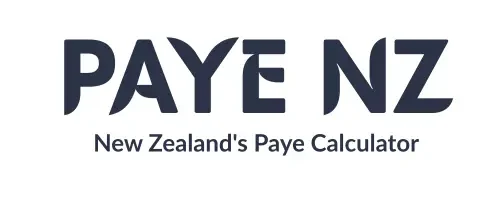KiwiSaver and PAYE: How They Work Together
For New Zealanders, KiwiSaver is a cornerstone of retirement planning, offering a structured way to save with contributions from employees, employers, and the government. Meanwhile, PAYE (Pay As You Earn) is the system that ensures income tax is deducted from your wages. A common question is whether KiwiSaver contributions reduce your taxable income, thereby lowering your PAYE tax. This comprehensive guide explores how these two systems interact, clarifies misconceptions, and provides practical examples to help you make informed financial decisions. Whether you’re new to KiwiSaver or reviewing your contribution rate, this article will equip you with valuable insights.

What is KiwiSaver?
KiwiSaver is a voluntary savings scheme launched in 2007 to help New Zealanders prepare for retirement. It’s open to citizens, permanent residents, and some temporary workers, with automatic enrollment for most new employees. Here are the key features:
- Employee Contributions: You can choose to contribute 3% (default), 4%, 6%, 8%, or 10% of your gross salary or wages, including bonuses, commissions, and overtime.
- Employer Contributions: Employers must contribute at least 3% of your gross salary, subject to Employer Superannuation Contribution Tax (ESCT).
- Government Contributions: The government provides up to $521.43 annually (50 cents per dollar contributed, up to $1,042.86) for eligible members who contribute between July 1 and June 30.
- Investment Earnings: Contributions are invested, and earnings are taxed at a Prescribed Investor Rate (PIR) of 10.5%, 17.5%, or 28%, often lower than standard income tax rates (KiwiSaver Income Tax).
- Eligibility: Available to those aged 18 and over, with provisions for younger members with parental consent.
KiwiSaver is a powerful tool for building long-term wealth, offering tax advantages on investment growth and flexibility for first-home purchases or retirement.
What is PAYE?
PAYE (Pay As You Earn) is New Zealand’s system for collecting income tax directly from employees’ wages. Employers calculate and deduct tax based on your gross income and tax code, then remit it to Inland Revenue. Key aspects include:
- Tax Brackets: Tax rates are progressive, e.g., 10.5% for income up to $14,000, 17.5% for $14,001–$48,000, and higher rates for higher incomes (as of 2025).
- Additional Deductions: PAYE calculations may include ACC levies, student loan repayments, or child support, depending on your circumstances.
- Tax Codes: You provide a tax code (e.g., M, ME) via the IR330 form to ensure accurate deductions (PAYE Deductions).
PAYE ensures taxes are collected efficiently, simplifying compliance for both employees and employers.
How KiwiSaver Contributions Are Made
KiwiSaver contributions come from three sources, each with specific rules:
- Employee Contributions:
- Calculated as a percentage of gross pay (before tax), including salary, bonuses, and overtime.
- Rates: 3% (default), 4%, 6%, 8%, or 10%, selected via the KS2 form (KiwiSaver Deductions).
- Deducted from net pay after PAYE and other deductions.
- Employer Contributions:
- Minimum 3% of gross salary, paid on top of your salary unless part of a total remuneration package.
- Subject to ESCT, with rates from 10.5% to 33% based on your earnings (Employer Contributions).
- Government Contributions:
- Up to $521.43 per year, automatically credited if you contribute at least $1,042.86 annually (KiwiSaver Benefits).
These contributions work together to grow your retirement savings, with each source playing a distinct role.
KiwiSaver Contributions and PAYE: The Interaction
A frequent misconception is that KiwiSaver contributions reduce your taxable income, lowering your PAYE tax. However, evidence from authoritative sources like Inland Revenue and reputable publications indicates that employee KiwiSaver contributions do not reduce taxable income for PAYE purposes. Here’s how it works:
- PAYE Calculation: PAYE tax is calculated on your full gross income, including salary, bonuses, and other taxable earnings, before any deductions.
- KiwiSaver Deduction: Your chosen contribution rate (e.g., 3%) is calculated on your gross pay but deducted from your net pay after PAYE tax and other deductions (e.g., ACC levies).
- Impact on Take-Home Pay: Higher contribution rates reduce your take-home pay but do not affect the PAYE tax amount.
For example, the NZ Herald clarifies that employee contributions are deducted from net income after PAYE, meaning the amount of PAYE tax you pay remains unchanged (KiwiSaver Contributions). Similarly, MoneyHub NZ confirms that contributions are taken from net pay (MoneyHub NZ).
There is some historical or context-specific information suggesting contributions might be deducted before PAYE in certain cases, such as specific employment agreements (William Buck). However, this appears to be an exception rather than the norm, and current standard practice aligns with post-tax deductions for employees.
Examples with Different Contribution Rates
To illustrate how KiwiSaver contributions affect your take-home pay without altering PAYE tax, consider an employee with a gross weekly pay of $1,000 and a simplified PAYE tax of $200 (actual tax rates vary):
Example 1: 3% Contribution
- Gross Pay: $1,000
- PAYE Tax: $200 (20% of $1,000)
- Net Pay (after PAYE): $800
- KiwiSaver Deduction: 3% of $1,000 = $30
- Final Take-Home Pay: $800 – $30 = $770
Example 2: 6% Contribution
- Gross Pay: $1,000
- PAYE Tax: $200
- Net Pay: $800
- KiwiSaver Deduction: 6% of $1,000 = $60
- Final Take-Home Pay: $800 – $60 = $740
Example 3: 10% Contribution
- Gross Pay: $1,000
- PAYE Tax: $200
- Net Pay: $800
- KiwiSaver Deduction: 10% of $1,000 = $100
- Final Take-Home Pay: $800 – $100 = $700
These examples demonstrate that PAYE tax remains constant ($200) across all contribution rates, while higher contributions reduce take-home pay.
Tables and Graphs
To clarify the impact of KiwiSaver contributions, here’s a table summarizing the examples:
| Contribution Rate | Gross Pay | PAYE Tax | Net Pay (after PAYE) | KiwiSaver Deduction | Final Take-Home Pay |
|---|---|---|---|---|---|
| 0% | $1,000 | $200 | $800 | $0 | $800 |
| 3% | $1,000 | $200 | $800 | $30 | $770 |
| 6% | $1,000 | $200 | $800 | $60 | $740 |
| 10% | $1,000 | $200 | $800 | $100 | $700 |
A line graph could further illustrate this relationship, with the x-axis showing contribution rates (0%, 3%, 6%, 10%) and the y-axis showing final take-home pay. This visual would highlight the linear decrease in take-home pay as contributions increase, while PAYE tax remains unchanged. For precise calculations, use the Inland Revenue PAYE calculator (PAYE Calculator).
Employer Contributions and ESCT
Employer contributions to KiwiSaver are separate from employee contributions and are subject to Employer Superannuation Contribution Tax (ESCT). Key points include:
- Minimum Contribution: Employers must contribute at least 3% of your gross salary, paid on top of your salary unless part of a total remuneration package.
- ESCT Rates: ESCT ranges from 10.5% to 33%, depending on your earnings. For example, if an employer contributes $36 (3% of $1,200 gross pay) and the ESCT rate is 30%, they pay $10.80 in ESCT, with a net contribution of $25.20 to your KiwiSaver account.
- No Impact on PAYE: Employer contributions and ESCT do not affect your taxable income or PAYE tax.
This tax ensures that employer contributions are taxed appropriately, but it’s handled by the employer, not the employee (Employer Contributions).
Common Misconceptions
Misconception: KiwiSaver Contributions Reduce Taxable Income
Many believe that KiwiSaver contributions lower the income subject to PAYE tax, similar to retirement schemes in countries like Australia or the US. However, in New Zealand, employee contributions are deducted after PAYE, so they do not reduce taxable income (NZ Herald).
Other Tax Benefits
While KiwiSaver contributions don’t save on PAYE, there are significant tax advantages:
- Investment Earnings: Taxed at a PIR (10.5%, 17.5%, or 28%), often lower than standard income tax rates.
- Tax-Free Withdrawals: Funds withdrawn for retirement or first-home purchases are not taxed.
- Government Contributions: The annual $521.43 contribution is effectively a tax-free boost to your savings.
Planning Your Finances
Understanding the interaction between KiwiSaver and PAYE is crucial for effective financial planning. Since KiwiSaver contributions reduce your take-home pay but not your PAYE tax, you need to balance current financial needs with long-term savings goals. Consider these tips:
- Assess Your Budget: Choose a contribution rate that aligns with your financial situation. A 3% rate may be suitable if you need more immediate cash flow, while 6% or higher accelerates retirement savings.
- Maximize Government Contributions: Contribute at least $1,042.86 annually to receive the full $521.43 government contribution.
- Use Online Tools: The Inland Revenue PAYE calculator (PAYE Calculator) helps you see how different contribution rates affect your take-home pay.
- Review Regularly: Adjust your contribution rate as your income or financial goals change, using the KS2 form or myIR account.
Conclusion
KiwiSaver and PAYE are integral to New Zealand’s financial landscape, but they operate independently in key ways. Employee KiwiSaver contributions are calculated on gross pay but deducted from net pay after PAYE, meaning they don’t reduce your taxable income or PAYE tax. However, KiwiSaver remains a powerful tool for retirement savings, with benefits like employer and government contributions and tax-advantaged investment earnings. By understanding this interaction, you can choose a contribution rate that balances your current income with your future financial security. Use tools like the Inland Revenue PAYE calculator to plan effectively and make informed decisions.
